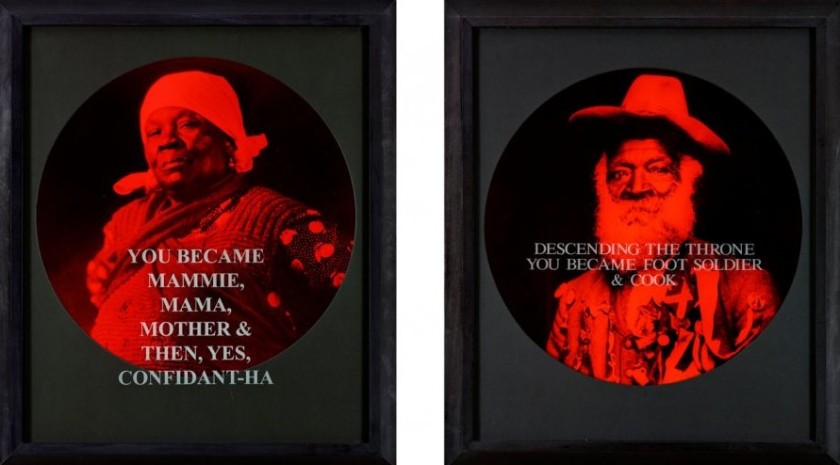“We’re always at the mercy of people’s desires to place us in certain identities.”
The words of Glenn Ligon are stenciled across the wall, one of the first things you see upon entering the 30 Americans exhibit at the North Carolina Museum of Art, if you can avoid being distracted by Nick Cave’s wild and fabulous Soundsuit in the next gallery. Ligon, who coined the term “post-black,” is one of the better known artists in 30 Americans which “highlights the work of 31 contemporary African American artists in an exhibition organized by and drawn from the Rubell Family Collection in Miami, Florida.”
My visit to the museum began with a debate in the morning by the UNC-Chapel Hill debate team. Two students argued in favor and two against the resolution: Can there be such a thing as truly black art? I wish Ligon was there. I would have loved his perspective.
I was expecting a bigger crowd for such a promising topic, but there were only 30 or so people attending, less than half of whom were black. The debate team raised a lot of interesting issues and struggled with some of the questions posed by the audience. It’s a bit uncomfortable to label art by the color of someone’s skin. I wouldn’t want to make that type of categorization in real life, why would it be different with art? But what about art that comes out of a shared experience of life, perspective or history? Isn’t that what black art is all about? It’s art first, that’s the key thing. Then any art work can be described using a variety of attributes – acrylic painting, expressionist, American, late 20th century, street, Buddhist, protest, women and black.

I can’t help but think I’m not in the best position to answer the question because I’m not black. But then I think, I’m a woman and I’m okay with the label “women’s art.” I’m looking forward to seeing an exhibition of women’s art, The Deconstructive Impulse: Reconfiguring the Signs of Power, 1973-1991, at the Nasher in September.
One of the debaters discussed whether labeling art as black would lead to discrimination? I thought about “separate but equal.” Does the label “black art” make it small somehow? Qualify it? Language has power. Labels can be tricky and perilous. What’s the motivation behind the label? If it’s in the spirit of celebration or recognition of deserved attention, then it’s fine. It’s art first. Then you can find more meaning through the lens of race, era, nationality, gender or a host of other descriptors.
If a group of people have a certain sensibility because they’ve experienced the same things, due to their skin color, nationality, gender or any other trait, then a categorization or label is valid. A black woman in the audience said, “black art is the perspective of blackness.” I’m happy to have the opportunity to immerse myself in that perspective. It makes my world bigger and richer.
Someone in the audience asked, is there white art? Is there a shared experience or history expressed in art that would lead to it being categorized as white art? The art world has traditionally been a white man’s world, so white art was always the default. Most of the western art displayed in museums is made by men with white skin that was later bought and collected by rich men with white skin. Thankfully, that’s slowly changing, although I’m grateful to the white-skinned Rubells who collected the magnificent art on display in 30 Americans.
In my next post, I’ll share some of my favorites from the 30 Americans exhibition. But don’t wait for me, go spend an hour or so in this great exhibition.


One thought on “Can There Be Such a Thing as Truly Black Art?”
Comments are closed.